Jimikand Curry
As an Amazon Associate and member of other affiliate programs, I earn from qualifying purchases.
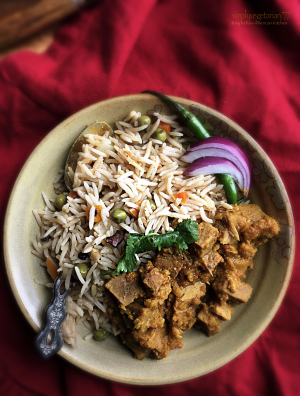
Jimikand Curry is another heirloom recipe from my mum’s kitchen, passed onto her by my Nani (maternal grandmother). Although my mother didn’t cook it often when we were growing up.
I am not sure why? May be because jimikand was not readily available in our town or may be because the other family members didn’t appreciate it much. But she often mentioned that her mother made the best Jimikand ki sabzi ever.
Try our some other curries from the blog – Saag Aloo, Chana Masala, Aloo Matar, Aloo Parwal, Palak Paneer, Malai Kofta, Butter Paneer Masala etc.
Edited for SEO & Readability – 1/25/24
Jimikand Curry
When I called up mum the other day and told her that I have a bag of frozen jimikand and do not know what to do with it. Immediately she recommended to make this curry. Since it is such a simple recipe to make, it has become a staple there on.
Jimikand is fibrous and very rustic in taste. My mother says, that it tastes like a vegetarian meat and often compared with fried paneer. Although the curry doesn’t look much in its appearance but the taste is just out of this world. You have to trust me on this.
What is Jimikand?
Jimikand is also known as Suran in many parts of India. And it is known as Elephant Foot Yam. Although Suran belongs to the tuber family but is used as a vegetable all across India.
Health Benefits of Jimikand
- Jimikand is an excellent source of carbohydrates, dietary fibre, potassium, and Vitamin C, making it an ideal food for promoting overall health.
- Prevents Constipation.
- Improves Digestive System
- Controls GI issues
- Reduces Inflammation
- Cholestrol Reducing Agent
- Promotes Brain Health
- Anti Cancer Properties
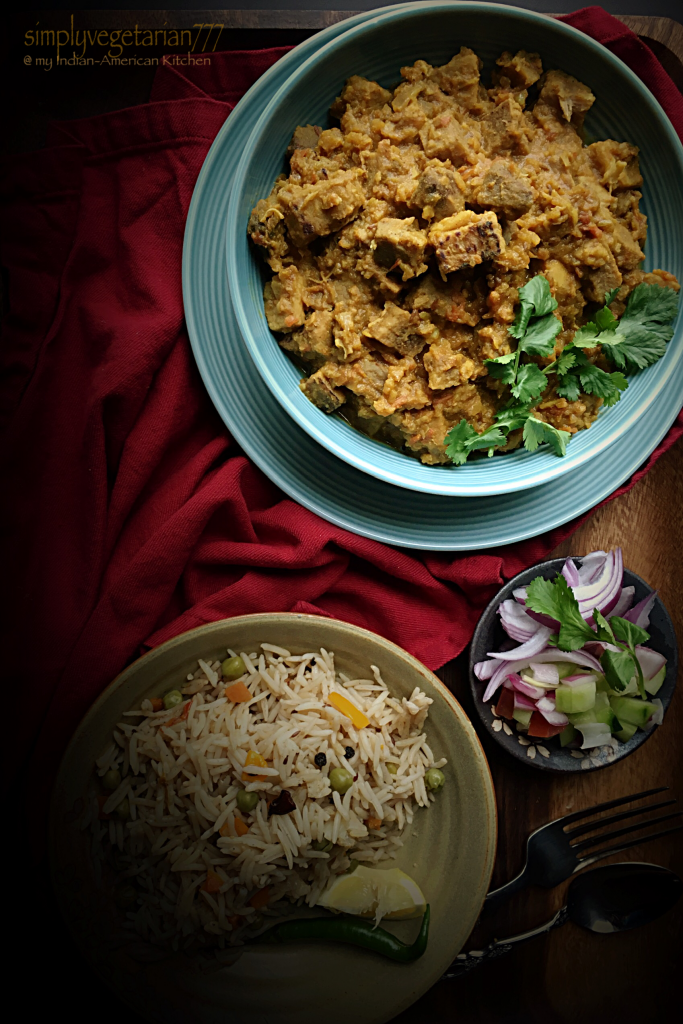
Kitchen Equipments
- Heavy bottom pan or Non stick pan with lid
- Kitchen Stirring spoon
- Chopping board & knife
- Food processor
Recipe Ingredients
Jimikand or Suran – you can use fresh or frozen. I use frozen. It is easily available at all the Indian Grocery Stores in the frozezn section.
Fresh Produce – Onions, Tomatoes, Ginger, Garlic, Green Chili, Cilantro/coriander leaves
Spices – Cumin seeds, Coriander powder, Turmeric powder, Red Chili powder, Garam Masala, Salt
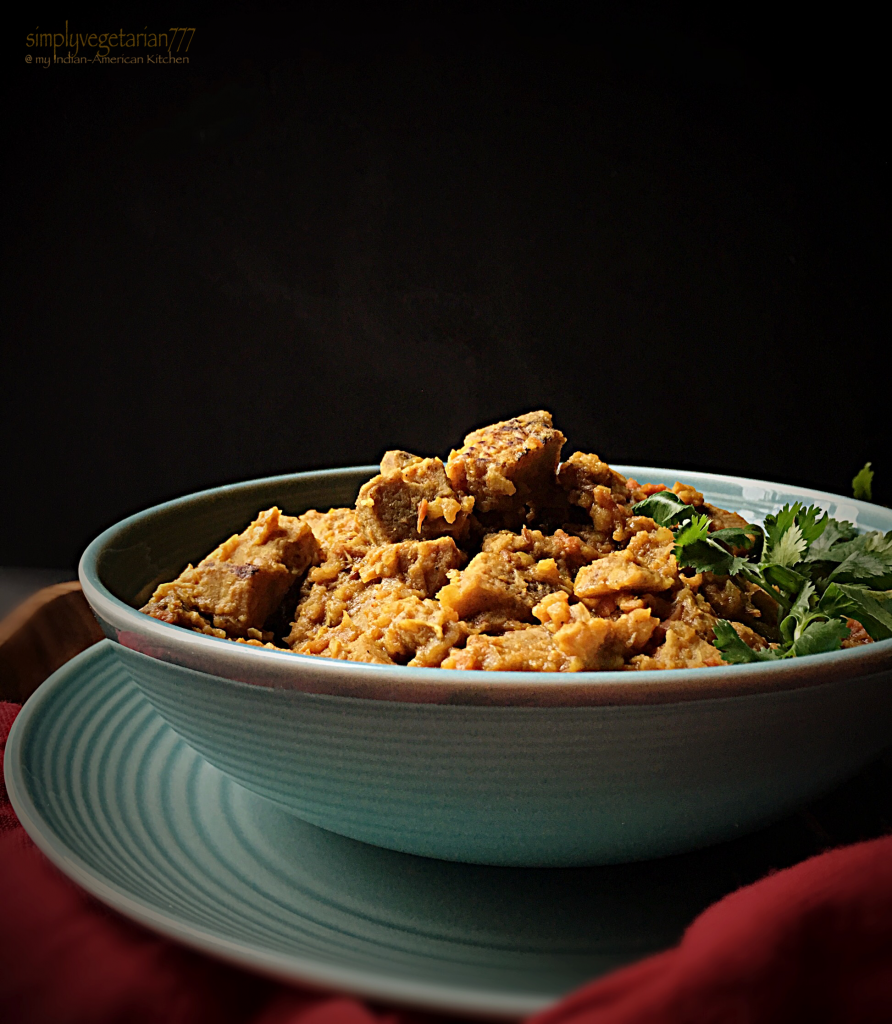
How to make Jimikand Curry at home?
Jimikand Curry
Equipment
- measuring cup and spoon
- Pot for Boiling
- Frying Pan with lid
Ingredients
- 350 grams or 1&1/2 cups Jimikand also known as Suran
- 1 medium Red Onion
- 2 medium Tomatoes
- 2 small Garlic cloves
- 1 small piece Ginger
- 1 small Green Chili
- 1 tbsp Cilantro leaves
Oil and Spices
- 1.5 tbsp Cooking Oil
- 1/2 tsp Cumin seeds
- 1 tbsp Coriander powder
- 1/2 tsp Turmeric powder
- 1/4 tsp Red Chili Powder
- 1/2 tsp Garam Masala
- To taste Salt
Instructions
Prep Jimikand
- You may cut the Jimikand in desirable size and shape. Now I use frozen which already comes cubed.
- First of all, boil some water and blanch Jimikand for 5-7 minutes. Alternately, you may pressure cook Jimikand pieces for 1/2 whistle. Switch off the gas, before the whistle blows off. Immediately release the pressure manually and open the cooker and drain in a sieve.
- Very important, dry it out completely after blanching.
- Now heat 1/2 tbsp oil in a heavy bottom pan. Further add the pieces of Jimikand in the hot oil and pan fry on medium high heat. Since you want slightly crispy pieces, fry these for about 5-7 minutes. Now set these aside in a plate lined with paper towel.
Make the Curry
- Roughly chop the onions, green chili, ginger and garlic and then add it to the food processor. Grind it fine. Set this aside.
- Now add roughly chopped Toamtoes to the food processor and purée fine. Set this aside too.
- In the same pan, heat 1 tbsp oil and add cumin seeds to it. Lower the heat to medium and add the onion paste to it. Sauté on lower medium flame, till it becomes reddish golden.
- Add puréed tomatoes to the pan along with all the spices as mentioned above. Stir with a spoon. Cover with lid and let it cook on slow for about 7-8 minutes till the curry paste becomes one. Stir few times in the middle.
- Remove the lid, add the shallow fried Jimikand pieces and water to it. Stir well. Cover again with lid and let cook for another 7-8 minutes on medium heat till the curry comes together.
- Garnish with coriander leaves and serve it hot with rotis or any kind of pulav or rice.
Notes
- If you are not conscious of the oil intake, then you may deep fry the Jimikand pieces.
- For richer curry, you may add 2 tbsp cream towards the end to it and use more oil in cooking of not using the non stick or hard anodized pan.
- The spices can be adjusted to your own taste.
- This curry can be made as thick or as runny, to your choice.
- Heavy bottom pan or Non stick pan with lid
- Kitchen Stirring spoon
- Chopping board & knife
- Food processor
Nutrition
Check out the BEST SELLERS here!
Sonal

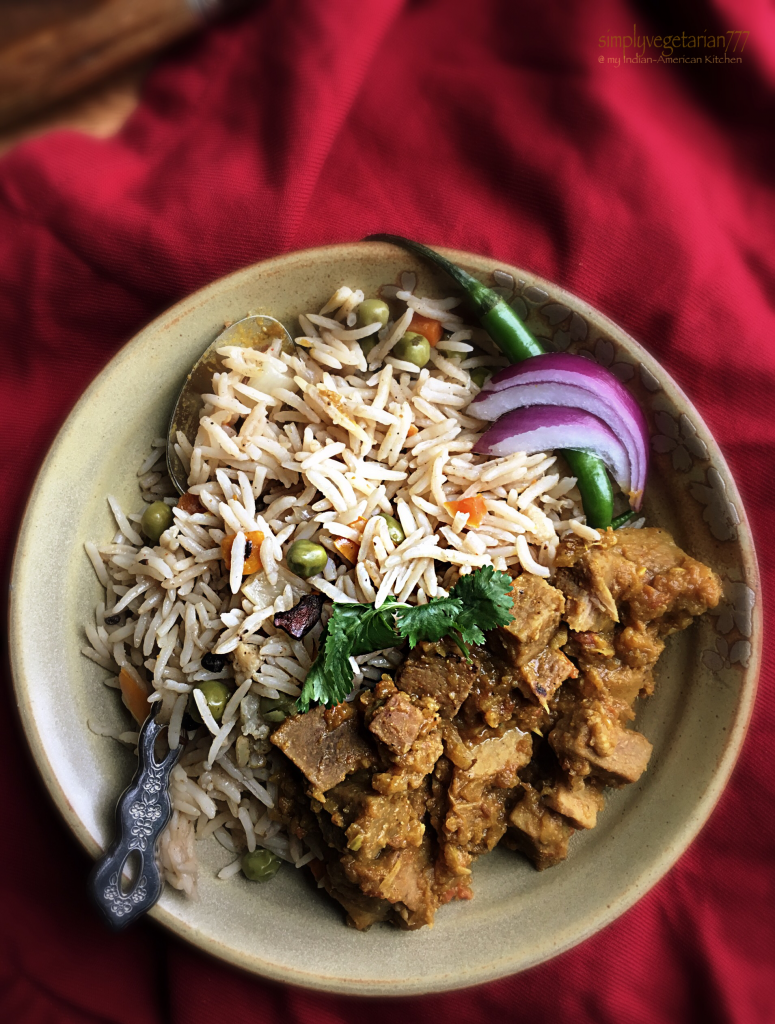
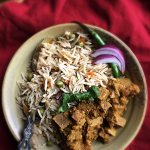
I haven’t heard of it either, but I opened up the post thinking it was some kind of meat, which surprised me! The joke was on me, I guess! This looks scrumptious and hearty and the photos are just gorgeous!
Thanks for sharing with us on Throwback Thursday!!
Mollie
Thank you so much Mollie
Such a special recipe that has been passed down! Thanks for sharing this Sonal! I wish I could pop over one day and sit at your table to try just of these dishes!
I would love to feed you
Yeah xxx
You make the most tantalising recipes and often with ingredients I have never even heard of. What a wonderful recipe!
Thanks dear! Trying to keep the heirloom recipes alive amongst the fusion and new world cuisine 🙂
The curry sounds so delicious and your photos look sexy to me. 😀
This is so very enticing, Sonal! 😀
Thank you
Jimikand never looked so beautiful and tempting! Love the recipe!
Have a good weekend!
Thanks Puneet 🙂
yummy curry. Sonal the name Jimmikand is what attracted me to this post..I didn’t know that suran was called jimmikand too 🙂 thanks for the lovely recipe!
Thanks Indu. In north, Suran is called Jimikand and is used widely but the changing lifestyles and lack of availability of ingredients is leading to the extinct of some traditional recipes!!
yeah and that is really sad 🙁
Loved it!!The best part is it is cooked in very less oil…Awesome recipe
Thanks Swati
I was just going to ask if it was like a potato, but Elaine called it a yam. Does it taste sweet like a yam? This dish sounds delicious to me!
Julie it is known as elephant foot yam in English and is really huge like elephant foto. It doesn’t taste sweet like yam or sweet potato but has a nice nutty and rustic taste 🙂
Thank you
I’ve never heard of Jimikand, I had to do a double take because it looks like meat. The curry sounds delicious and this is something I would love to try. Your photo’s make every dish look a meal you woud serve a King. So beautiful!!
Jimikand is a very rustic tuber Suzanne, and is traditionally used in many ways in Indian households but current lifestyles and lack of availability of ingredients, many recipes are getting lost…I keep asking my mom and mom in law about their childhood favorites to keep some of the recipes alive 🙂
This sounds lovely Sonal and I can’t believe I have never taste this before…..will have to give it a try. Love the pictures
Thanks Zeba ❤️
I’m not so sure I’ve heard of this Sonal, but wow, look at those individual basmati grains, and your jimikand curry sounds real appetizing. Brilliant photography 🙂
Thank you Loretta
I am using low GI Basmati these days which has thicker grain and is quite delicious 🙂
How interesting, Shailja also posted a recipe using the same yam today 🙂 I’ll definitely have to look out for it, your dish sounds lovely x
Thanks Elaine!
Shailja and I pick a common ingredient once a month and blog simultaneously using the ingredient :).
Aha! Now it all make sense 🙂